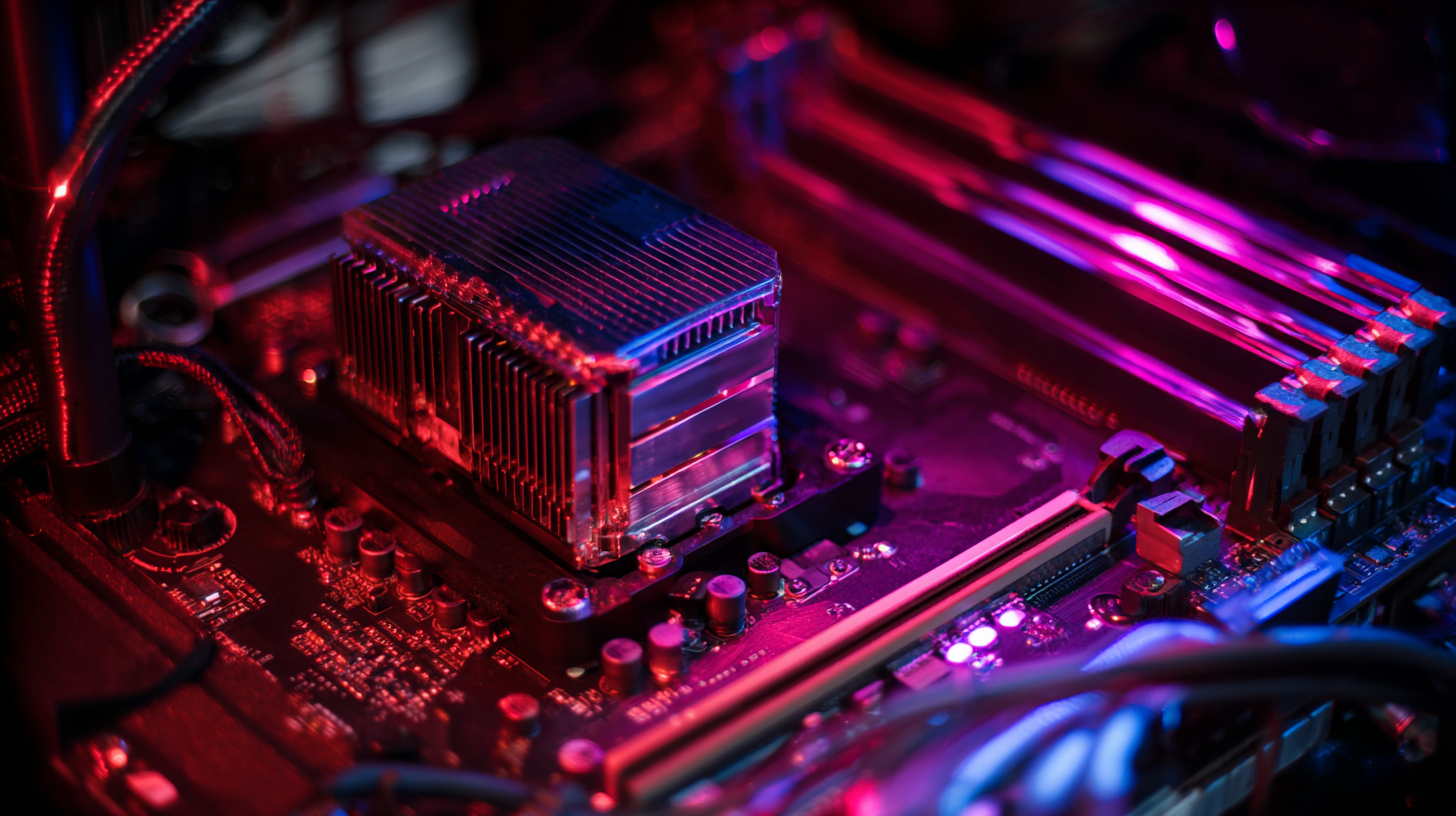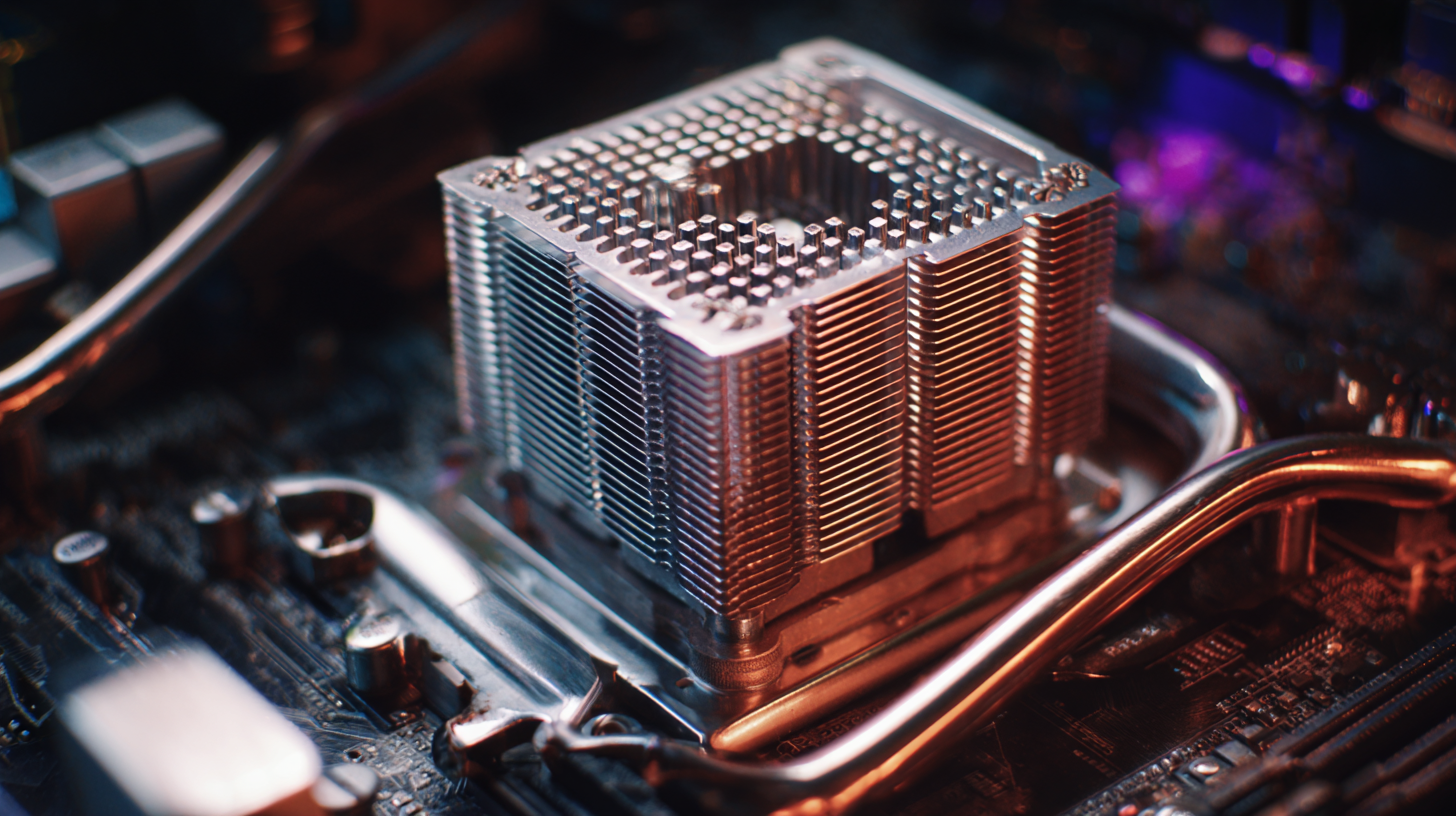Leave Your Message
In the realm of modern computing systems, the management of thermal output is a critical factor that directly impacts performance and longevity. At the heart of this thermal management lies the Cpu Heat Sink, a vital component designed to dissipate heat generated by the CPU during operation. As processors continue to evolve, becoming faster and more powerful, the need for effective cooling solutions has never been more pronounced. The Cpu Heat Sink plays an essential role not only in maintaining optimal temperature levels but also in ensuring system stability and reliability. Understanding its design, functionality, and the various types available can empower users and builders alike to make informed choices that enhance performance while prolonging the life of their computing systems. This article aims to unpack the intricacies of Cpu Heat Sinks, offering practical tips and insights into their selection and application in diverse computing environments.

The importance of CPU heat sinks in modern computing systems cannot be overstated, as they play a crucial role in preventing overheating, which can lead to severe performance issues and potential damage to hardware components. Heat sinks are designed to absorb and dissipate heat generated by the CPU during operation, maintaining optimal temperatures to ensure the processor functions efficiently. Without an effective heat sink, CPUs can quickly reach thermal limits, resulting in thermal throttling—or worse, system failures.
In today's high-performance computing environments, where CPUs are subjected to intense workloads, the effectiveness of heat sinks becomes even more vital. Advanced designs, such as those incorporating multiple heat pipes and large surface areas, enhance heat transfer capabilities, allowing for better cooling. This is particularly important for gaming PCs and servers, where sustained performance is essential. Therefore, investing in a quality heat sink not only safeguards the CPU but also enhances overall system reliability and longevity, making it an indispensable component in modern computing architectures.
Heat sinks play a vital role in maintaining optimal operating temperatures in modern computing systems, utilizing various designs and materials to enhance thermal performance. The efficiency of a heat sink hinges on its ability to dissipate heat away from components like CPUs and GPUs. Common designs include finned arrays, which increase the surface area for heat dissipation, and vapor chambers, which spread heat across the sink more evenly. According to a 2022 Thermal Management Report, finned heat sinks can improve cooling efficiency by up to 30% in high-performance computing applications when properly engineered.
Materials used in heat sink construction significantly impact their thermal conductivity and weight. Aluminum is prevalent due to its excellent heat transfer properties and lightweight nature, making it suitable for a wide range of devices. Copper, while heavier and more costly, offers superior thermal conductivity, often used in high-end models where performance is paramount. Recent industry data indicates that systems using copper heat sinks can reduce operating temperatures by as much as 15% compared to aluminum counterparts, making them a popular choice among enthusiasts and engineers alike.
Tips: When selecting a heat sink, consider the specific needs of your system, including size constraints and thermal loads. Also, pay attention to the mounting method, as proper contact with the CPU is crucial for optimal heat transfer. Regularly clean your heat sinks to prevent dust buildup, ensuring continuous efficiency in heat dissipation.
A heat sink plays a critical role in modern computing systems by enhancing system performance and prolonging longevity. As processors generate increasing amounts of heat, effective thermal management becomes essential. Heat sinks act as a passive cooling solution that dissipates heat away from the CPU, ensuring it operates within optimal temperature ranges. This cooling mechanism not only stabilizes performance by preventing thermal throttling but also allows for sustained high-performance tasks, such as gaming or data processing.
Furthermore, the longevity of computing components is significantly improved due to the implementation of efficient heat sinks. By reducing the operating temperature of CPUs, heat sinks minimize wear and tear on the hardware. Overheating can lead to accelerated degradation of electronic components, resulting in failures and costly replacements. Thus, a well-designed heat sink not only enhances the performance of the system but also safeguards its durability, ensuring that users can rely on their devices for extended periods without frequent maintenance or upgrades.

In modern computing systems, efficient heat management is essential for maintaining performance and longevity. Airflow, often overlooked, plays a crucial role in transporting heat away from critical components like the CPU. Properly designed cases with strategically placed fans can create a consistent airflow that minimizes hotspots. This not only helps in keeping temperatures in check but also ensures that components function optimally without thermal throttling.

Tips: Ensure that your cooling solution is complemented by good cable management. Tidy cables can significantly improve airflow within the case, allowing fans to work more efficiently. Additionally, consider the placement of intake and exhaust fans; having a balanced airflow direction can avoid negative pressure that pulls warm air back into the system.
Various cooling techniques, such as liquid cooling or advanced heat sink designs, can also enhance heat dissipation. However, without adequate airflow, even the best cooling systems may struggle to keep components at safe operating temperatures. Combining high-quality heat sinks with effective airflow strategies can lead to a cooling setup that maximizes the performance of your computing system without the risk of overheating.
As modern computing systems continue to evolve, the need for efficient thermal management has never been more critical. Future innovations in CPU heat sink technology are poised to dramatically enhance the performance and longevity of processors. One of the most promising developments lies in the utilization of advanced materials, such as carbon nanotubes and phase change materials, which offer superior thermal conductivity compared to traditional metals. These materials can significantly improve heat dissipation, allowing CPUs to operate at lower temperatures while maximizing performance under heavy loads.
Moreover, the integration of smart technologies into heat sink designs is expected to revolutionize thermal management. For example, the incorporation of sensors and adaptive cooling systems can enable real-time adjustments based on CPU temperature fluctuations. This dynamic response not only conserves energy but also prevents overheating, thus prolonging the lifespan of computing components. Essentially, as CPUs become more powerful and compact, innovative heat sink solutions will play a crucial role in maintaining optimal operating conditions, paving the way for cutting-edge advancements in computing.
